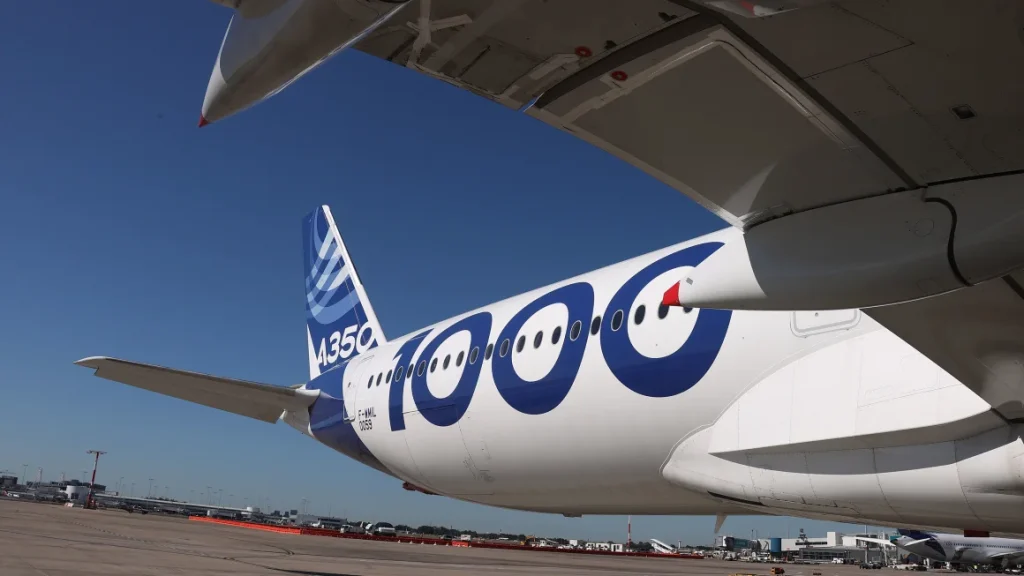Europe’s air safety regulator ordered inspections on engines of a flagship Airbus jet on Thursday, after a fire broke out during a Cathay Pacific flight.
The European Union Aviation Safety Agency (EASA) said it was acting to prevent similar events after consulting regulators and accident investigators in Hong Kong, where Cathay is based, as well as Airbus and engine supplier Rolls-Royce.
“This action is a precautionary measure, based on the information received from the initial investigation of the recent Cathay Pacific serious incident and on the airline’s findings in its own subsequent inspections,” EASA Executive Director Florian Guillermet said in a statement.
EASA also confirmed that the failure of a hose in the fuel system had caused a fire that was quickly tackled by crew.
A “serious incident” is an investigative term in aviation that means there was a high probability of an accident.
“We will continue to follow closely all information that will be made available through the ongoing safety investigation,” Guillermet said.
In an emergency directive issued late on Thursday, EASA gave airlines between three and 30 days to carry out visual checks and measurements on the fuel hoses but did not call for parts to be removed for the work, unless they were found to be damaged.
It excluded engines already inspected by Cathay.
Rolls-Royce and Airbus said earlier they were working closely with authorities to comply with the planned directive. Rolls said it was focused on minimizing any short-term disruption, adding: “We apologize to those who may be affected.”
The A350-1000 and its XWB-97 engines have been under the spotlight since a Zurich-bound jet was forced to return to Hong Kong on Monday after the engine problem, later traced to a fuel leak.’
Initial investigations have revealed that a hose between a manifold and a fuel injection nozzle was pierced, sources said on Wednesday, and the Hong Kong-led probe must now determine whether this was the cause or a consequence of the incident.
EASA said the fire had caused heat damage to the engine housing, including ducts used for reverse-thrust on landing.
“This condition, if not detected and corrected could, in combination with additional failures, lead to a more severe engine fire and resulting damage to an airplane,” it said.
Reuters had reported earlier on Thursday that the EASA’s measure was likely to involve a visual inspection with progressive deadlines, a relatively light maintenance task.
By ordering checks, however, EASA partially overrode efforts by manufacturers to avoid disruptive action on the whole fleet on the basis of their own technical analysis, sources said.
Barring fresh evidence, they had been leaning against recommending worldwide checks but the final say is with regulators, sources told Reuters on Wednesday.
Safety concerns
Due to the highly complex nature of aircraft and engines, manufacturers typically perform much of the technical groundwork in preparing regulatory instructions and play a crucial part in global monitoring of the fleet in service.
However, regulators can override their recommendations and order their own checks, and they face increasing pressure to be seen to act independently following a global tightening of safety oversight in the wake of a Boeing (BA) safety crisis.
Thursday’s decision is seen as the first public test for the recently appointed Guillermet.
Although it was quickly contained and nobody was injured, the stakes in how the incident is handled remain high for Rolls-Royce and airlines amid public concerns over air safety.
The directive followed hours of talks over key technical wording spelling out the criteria for replacing any parts.
Rolls is seen anxious to ensure any repair work is driven by technical factors rather than less tangible pressure on airlines and is likely to remind carriers to use correct procedures and tools after a wave of ad hoc inspections, sources said.
Airlines, for their part, have been pushing for clarity from Rolls and Airbus and some have been privately critical of the lack of communication as they face questions from passengers.
Airbus and Rolls sought to address airlines’ questions on Thursday during their first closed briefings since Monday’s incident. Questions included which planes would be affected and the availability of parts, a person briefed on the matter said.

